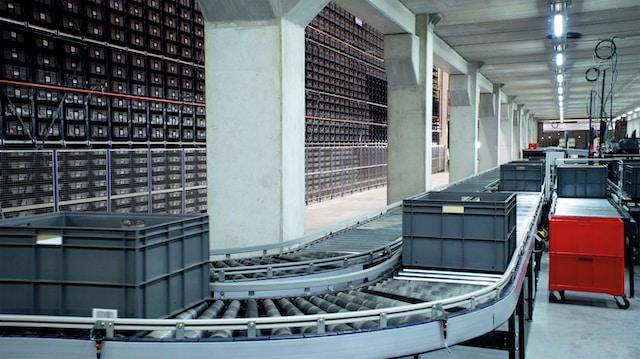In the early days of warehouse robotics, the capabilities of these machines were quite limited. They operated along fixed paths and followed programmed instructions. Their primary role was to perform repetitive tasks with precision. These robots were supervised by human operators, allowing for continuous operation, especially for tasks that needed 24/7 attention. This automation brought benefits like increased efficiency, consistent performance and reduced human errors associated with repetitive work.

However, a significant transformation occurred with the introduction of Autonomous Mobile Robots (AMRs). Unlike their predecessors, these new-generation warehouse robots exhibit a high degree of autonomy. Artificial intelligence and machine learning allow them to adapt to their surroundings and make real-time decisions based on their environment.
Benefits of AI-Powered Warehouse Robots
The integration of artificial intelligence has bestowed a multitude of benefits upon the realm of warehouse robotics:
- Enhanced Accuracy: One of the standout advantages is the ability of AI systems to process vast volumes of data with unparalleled accuracy. This precision translates to improved decision-making and execution of tasks within the warehouse ecosystem.
- Complex Data Analysis: AI-powered robots can extract meaningful patterns and insights from complex data sets. This analytical prowess aids in strategic decision-making and process optimization, enabling warehouses to operate efficiently.
- Improved Productivity: The fusion of AI and robotics results in faster task execution and optimal resource utilization. AMRs can swiftly navigate the warehouse environment, making them indispensable tools for achieving peak productivity.
- Safety and Risk Reduction: With AI-powered robots, the burden of hazardous tasks can be lifted from human workers. These robots can effectively manage tasks that pose risks to human well-being, enhancing workplace safety.
Challenges in Implementing AMRs in Warehouses
While the benefits are evident, the adoption of AMRs in warehouses comes with its own set of challenges:
- Cost of Implementation: Setting up and integrating AI systems comes with upfront costs. Additionally, ongoing maintenance expenses must be considered, making economic viability a critical factor.
- Human Adoption: AI or robots are never meant to replace human workers. Instead, they’re supposed to make lives simple by eliminating dangerous tasks from the itinerary of human workers. It means you’ll still need human employees in the warehouse and it might take a while for all of them to understand and operate the new-gen warehouse robots.
- Job Displacement: While automation enhances efficiency, concerns about job displacement are valid. Organizations need strategies to address this, which may involve reassigning employees to different roles or providing them with training for new job requirements.
Final Note
AI and robotics have ushered in a new era of warehouse management, turning traditional robots into intelligent, adaptable systems. Despite challenges like cost, human adaptation and job displacement, the benefits in terms of accuracy, productivity and safety make adopting AMRs a worthwhile endeavor.
Striking a balance between automation and the human workforce is crucial to ensure that collaboration between humans and robots leads to an efficient, productive and ethical future in warehouse management.




Comments are closed.